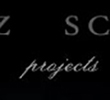| 
CA
Interview (below)
How easy
did you find it to get your first job as a concept artist with Digital
Domain? Is this the sort of role where artists are judged more on their
artistic skills than their past experience?
After
having been involved in several movies in Europe which never were made,
I got hit by a lightning in my penthouse in Brussels. Once recovered,
I decided that life is short so I bought a plane ticket to try my luck
in Los Angeles. I gave myself five weeks to find a job in LA. It was probably
my naiveté combined with a kind of unbound enthusiasm which got
me my first job in Digital Domain. It also helped to physically show up
at the studio doors instead of just sending a resume to human resources.
In my experience younger artists get hired for the content of their portfolios,
personality and enthusiasm. More senior people have their experience to
their advantage.
What prompted you to switch from traditional media
to digital tools? How has this influenced your way of working? Is it more
efficient, or artistically flexible, for example? And do clients tend
to prefer digital art, or show little preference?
The switch from traditional to digital media started in the preproduction
phase of Final Fantasy: The Spirits Within. I started to scan in my marker
illustrations and begun to manipulate them in Adobe Photoshop. After two
years, most of the American illustrators were sent back home to the mainland
U.S. (we were in Hawaii at the time) and I was offered to work on the
video game Final Fantasy IX. All the Japanese illustrators had already
made the switch to digital media. I started to emulate their techniques,
scan my drawings and do all my paintings in the computer. Towards the
end of the year, I also started to create digital matte paintings for
the game. Once the game was finished, I returned to Square’s film
division as a digital matte-painter where I created the matte art for
all of Aki’s dream sequences, many city shots in Final Fantasy and
all the “real world” shots for the Animatrix project.
Today most art directors and production designers have switched to fully
digital studios. For illustrators who depend heavily on their drawing
skills, such as character and costume designers and storyboarders, the
first step is still traditional sketching. I personally like to paint
in the computer, but I still return to the drawing board ever so often.
How
many concept artists does a film usually require? Do several artists share
a workload, or focus on different areas? And what if several CG studios
are working on a movie - do different concept artists tend to work for
individual studios, or are they usually employed by the movie producers
to produce art that's sent out to all vendors?
An art department for a movie has anywhere from three to ten concept artists.
The preproduction phase is often detached from the CG studios –
The film directors, at that stage, want to pre-visualize the movie for
them. Once the first pre-visualization stage is completed, the movie gets
pitched and eventually greenlit. At this point, the postproduction houses
get involved, and often a new set of concept artists are hired to design
specific environments and effects. In Hollywood studio system preproduction,
actual production and postproduction can be very fragmented. Recently
some studios have been consolidating all the production stages - namely
the animation houses but also places like ILM and Dreamworks.
Is movie concept art work particularly lucrative?
And how much of a challenge can it be in terms of workload, working hours,
the need to redesign as the direction of a film changes, etc?
Top film designers are very well paid, with salaries reaching between
$2500 up to $5000 per week, working up to 11 hours a day. Most designers
get paid by the day, so redesigns do not affect their pay.
Finally, what advice would you offer other artists
keen to break into this area? What particular skills should their refine
and highlight in their portfolio? And what's the best way to build up
contacts and get that first industry job?
I am strong believer in a solid art education. Even if you wish to work
mainly with computers, I would stress the importance to learning how to
paint, draw and have an extended knowledge of art history. Aspire to create
a portfolio which meets or exceeds industry standards while at the same
time reflects your own style and personality.
Ask advice and feedback and if possible arrange a meeting with art directors
and producers even if they are not hiring at that moment in time.
return
to Press index here
|















